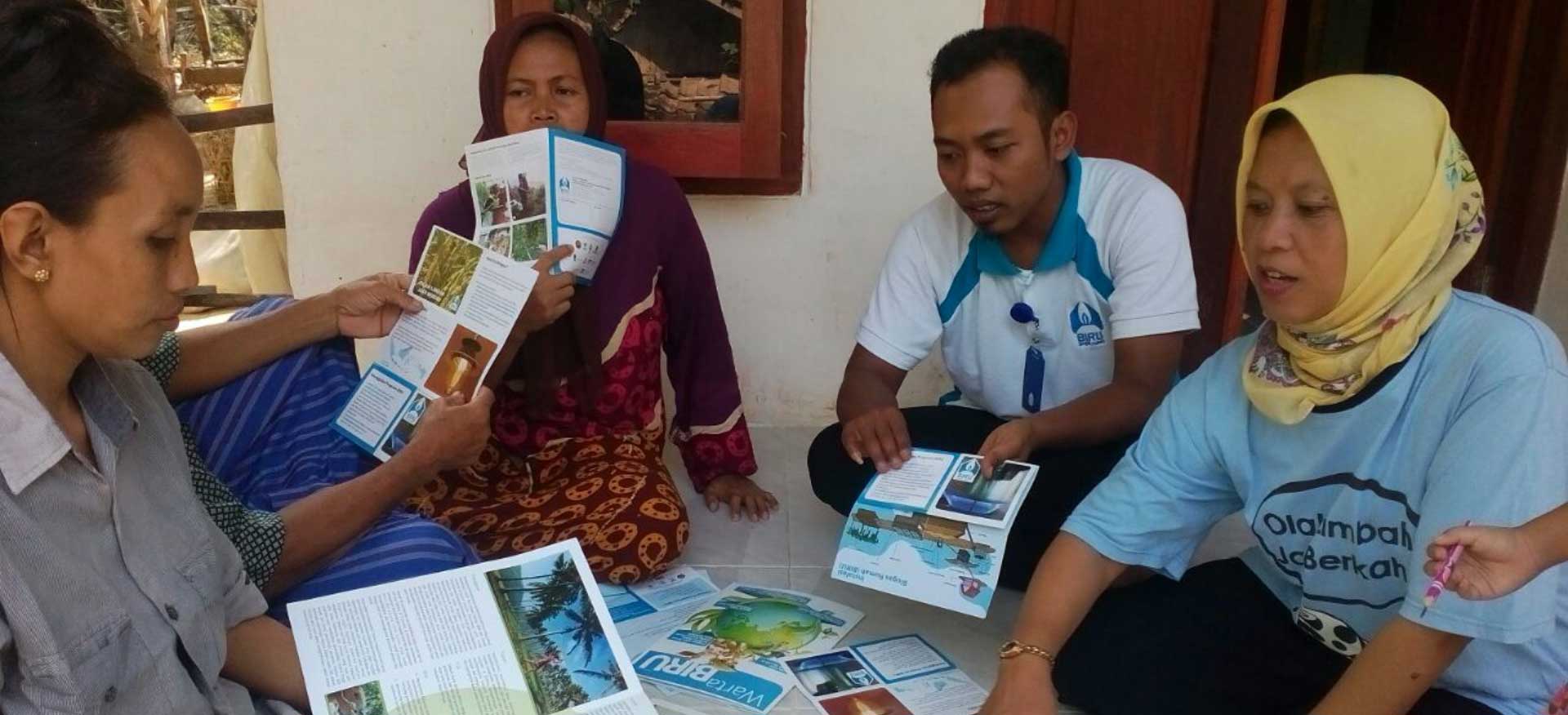Spreading the Word about Biogas in Sumberbulu
Many houses in Sumberbulu, a small hamlet in Pendem Village, Karanganyar District, Central Java, have the same concrete gate design —down to the white-and-blue coloring. The abodes themselves look similar, with wide façades and front yards. In addition, most of the people have two things in common: rice fields and cattle.
Paimin Patmo Wiyono used to own three cows. About four months ago, he sold one of them in order to build a six-cubic-meter biogas reactor behind his cowshed.
“My wife initially rejected the idea. She said we needed the cow to prepare ourselves for many future needs,” Paimin said, glancing sideways at his wife. “But I told her that we needed the biogas digester. I’m getting older by the day, feeding the cattle is a lot of work, and one day there may not be any firewood to collect for cooking.”
Paimin himself had to come to a village meeting that discussed about biogas in order to be convinced that biogas was what his household of seven people needed. The fact that the reactor’s waste, called bio-slurry, can be used as fertilizer encouraged him even more. He tried to spray his rice fields with a blend of bio-slurry and water, but the fibers in the mixture kept clogging the device.
“I’m going to just dry it to spread later on. I was also told that I could put it into a perforated sack so I could collect the essence as it dripped down; that way I can still use the sprayer,” the 58-year-old said.
The main pipe from the digester dome does not only run to the household’s stove, which Paimin’s wife used to be scared of turning on when they were still using a 3 kilogram LPG canister. As electricity in the area is usually unreliably whenever heavy rain falls, Paimin installed a biogas-powered lamp in their family room to prepare them for the upcoming rainy season.
“A lot of my neighbors came by to see how biogas worked as soon as I had the reactor installed,” Paimin said with a proud smile.
Many people of Sumberbulu now seem to have another thing in common: They want a biogas reactor in their households. Their only problem is not having the money required to build it. One of the last houses to have one installed belongs to a Tatok Suparno, a young father of one, and an entrepreneur.
“I once heard that to build a biogas digester you had to have 25 million [rupiah] ready,” 31-year-old Tatok said. “But recently I heard from a neighbor that it was a lot cheaper, and that I could get a partial funding of two million from BIRU, which my neighbor later linked me to. The total cost spent to build my reactor was just a little over five million.”
Tatok had been an enterpreneur before he got married. He continued the business of selling coconut-wrapped rice, fritters, and various drinks at a makeshift roadside tent after Wijiastuti became his wife about five years ago. Using three stoves – all powered by an eight-cubic-meter biogas reactor —and one firewood stove, the couple prepare the food several hours before they set up the tent. They need so much gas each day that almost no bio-slurry gets pushed out of the digester’s outlet after 3.5 months of effective usage.
“The firewood stove is for cooking rice. The rice boiler is too big for the biogas stove. We still use an LPG canister to fry fritters and boil water at the tent, so our customers could have warm snacks and drinks,” Wijiastuti said. “Still, we used to spend a lot more. It takes a lot faster to cook with biogas, too.”
The couple hoped one day there could be a way for biogas to be put into a canister, so they would not need to rely on LPG at all.
Tatok and Wijiastuti could not tell the exact monetary profit they have been making since they turned to biogas. Tatok, however, could give an illustration, “To cook all the things we sell, we used to use a three-kilogram LPG canister, which would run out after two or three days. Not to mention sometimes LPG can be hard to come by here, so I had to drive far away to look for it, using up the gasoline in my motorbike.” (Labodalih Sembiring)

